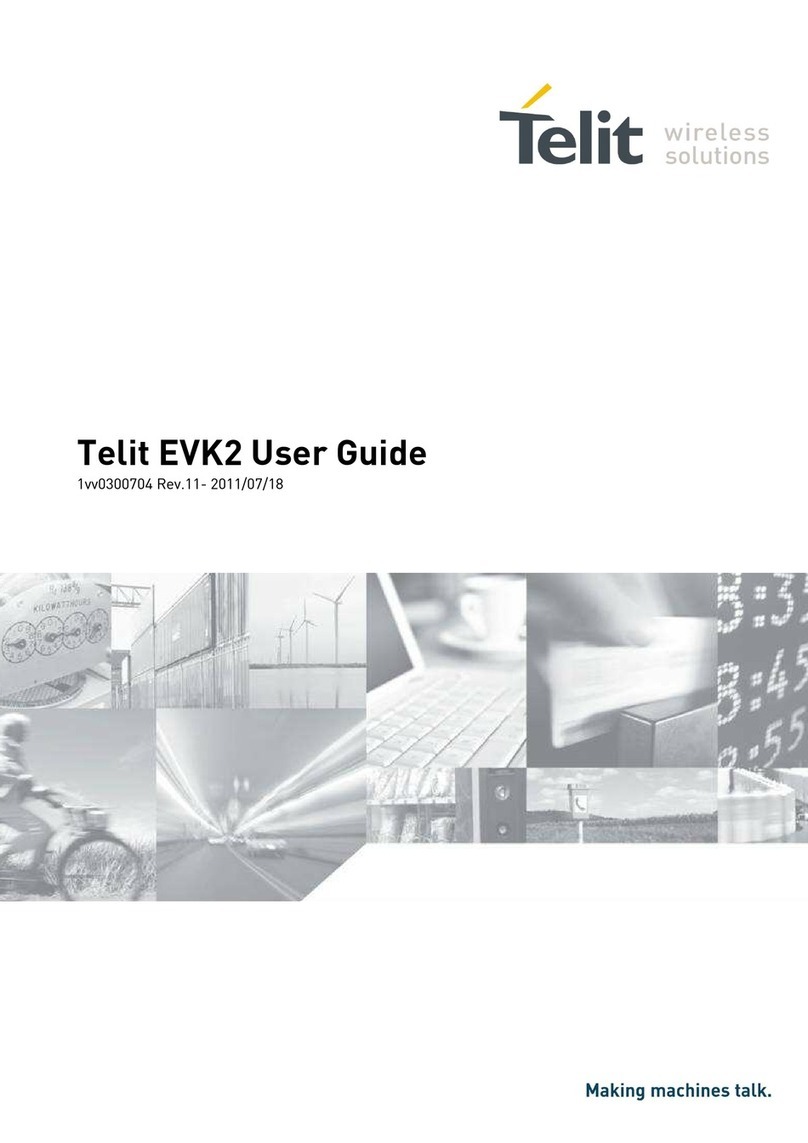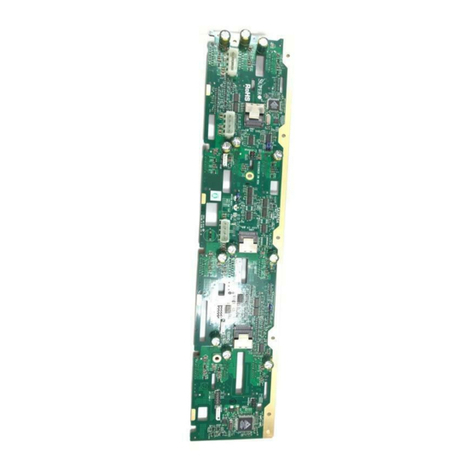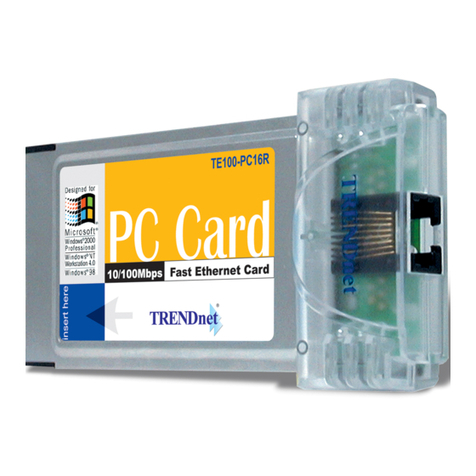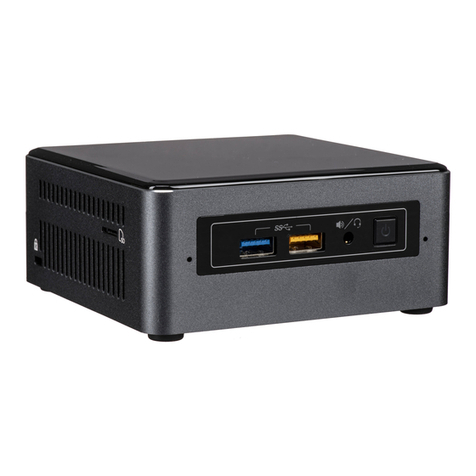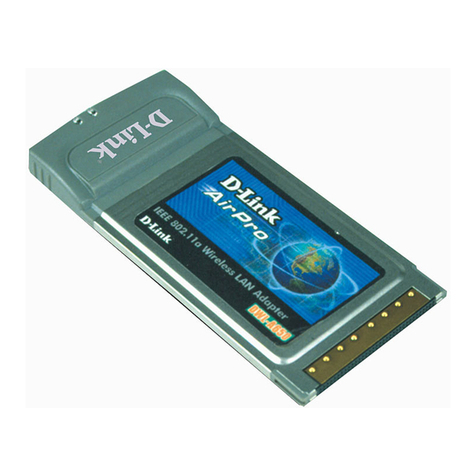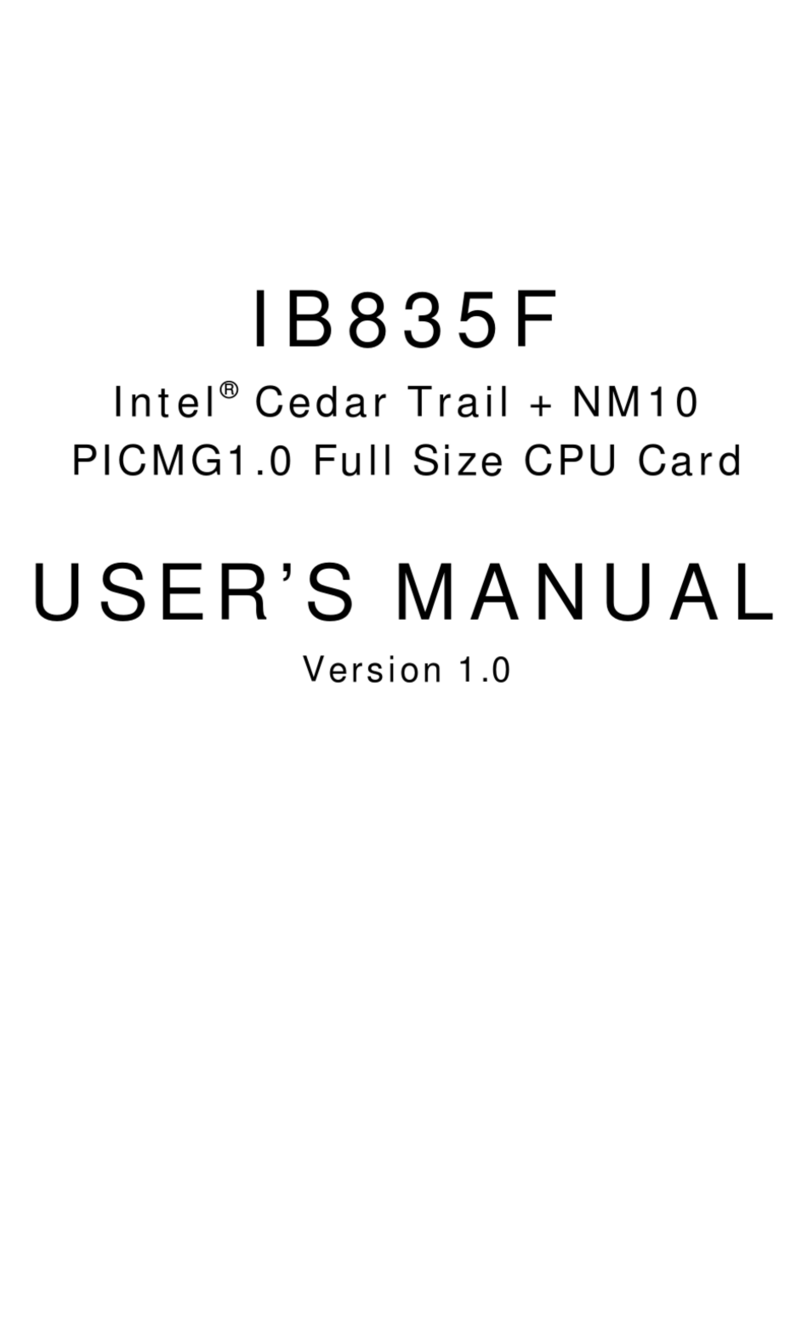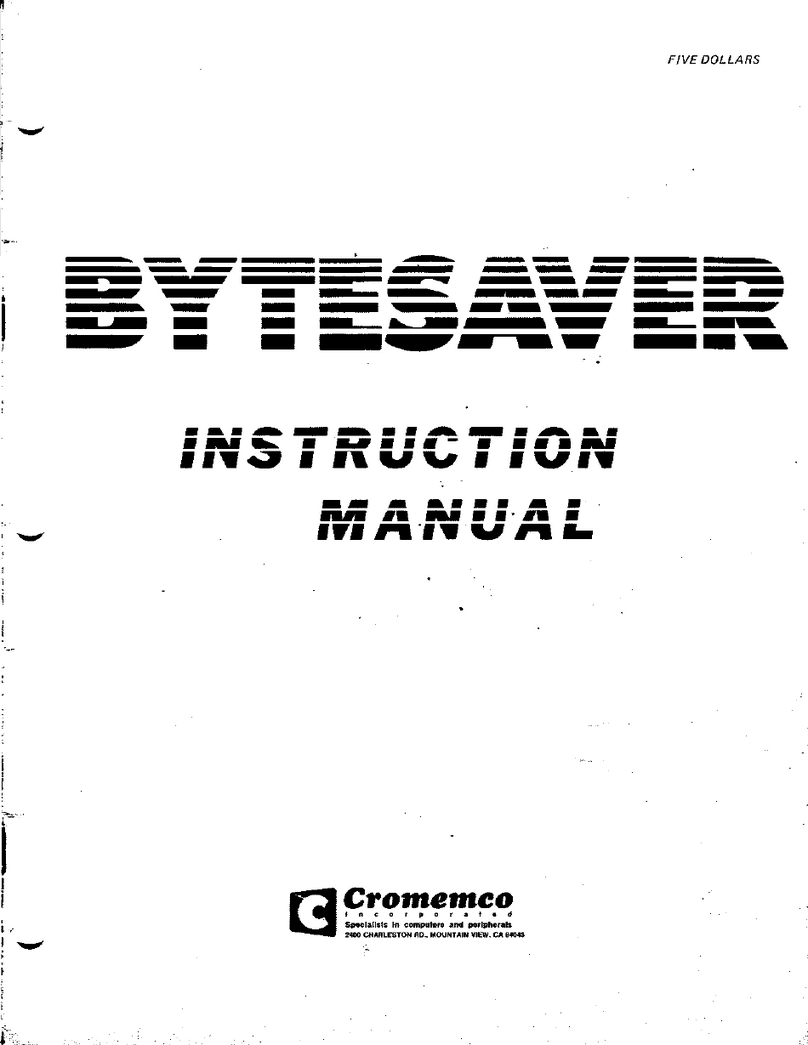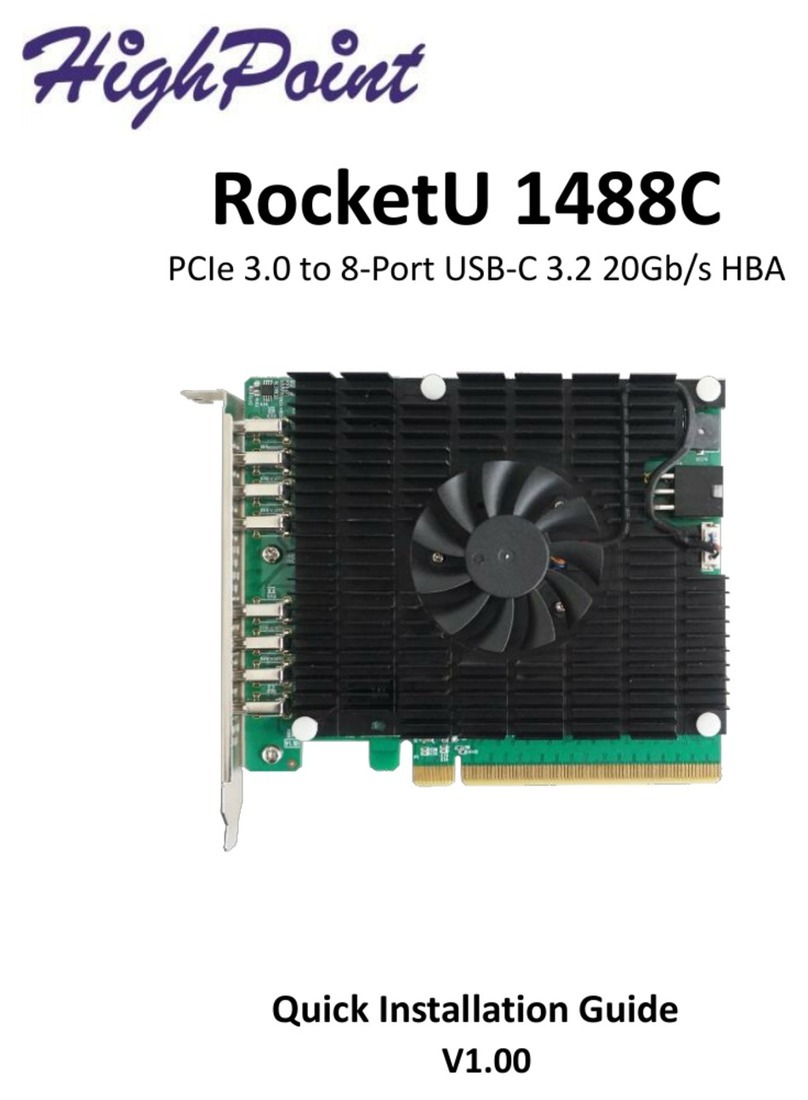BR-Automation X20CP1301 User manual

X20(c)CP1301, X20CP1381 and X20CP1382
Data sheet V1.21 1
X20(c)CP1301, X20CP1381 and X20CP1382
1 General information
Compact CPUs are available with processor speeds of 200 MHz and 400 MHz. Depending on the variant, up to
256 MB RAM and up to 32 kB nonvolatile onboard RAM is available. A built-in flash drive is available to store up
to 2 GB of application and other data.
All CPUs come equipped with Ethernet, USB and one RS232 interface. In both performance classes, integrated
POWERLINK and CAN bus interfaces are also available. If additional fieldbus connections are needed, the CPU
can be upgraded with an interface module from the standard X20 product range. These CPUs do not require fans
or batteries and are therefore maintenance-free. 30 different digital inputs and outputs and 2 analog inputs are
integrated in the devices. 1 analog input can be used for PT1000 resistance temperature measurement.
•CPU is Intel x86 200/400 MHz compatible with integrated I/O processor
•Ethernet, POWERLINK with poll-response chaining and USB onboard
•1 slot for modular interface expansion
•30 digital inputs/outputs and 2 analog inputs integrated in the device
•1/2 GB flash drive onboard
•128/256 MB DDR3 SDRAM
•Fanless
•No battery
•Battery-backed real-time clock
2 Coated modules
Coated modules are X20 modules with a protective coating for the electronics component. This coating protects
X20c modules from condensation and corrosive gases.
The modules' electronics are fully compatible with the corresponding X20 modules.
For simplification purposes, only images and module IDs of uncoated modules are used in this data
sheet.
The coating has been certified according to the following standards:
•Condensation: BMW GS 95011-4, 2x 1 cycle
•Corrosive gas: EN 60068-2-60, method 4, exposure 21 days

X20(c)CP1301, X20CP1381 and X20CP1382
2 Data sheet V1.21
3 Order data
Model number Short description
X20 CPUs
X20CP1301 ZX20 CPU, with integrated I/O, x86-200, 128 MB DDR3 RAM, 16 kB FRAM, 1 GB onboard flash
drive, 1 insert slot for X20 interface modules, 1 USB interface, 1 RS232 interface, 1 Ethernet
interface 10/100BASE-T, 14 digital inputs, 24 VDC, sink, 4 digital inputs, 2 µs, 24 VDC, sink, 4
digital outputs, 24 VDC, 0.5 A, source, 4 digital outputs, 2 µs, 24 VDC, 0.2 A, 4 digital inputs/out-
puts, 24 VDC, 0.5 A, 2 analog inputs ±10 V or 0 to 20 mA / 4 to 20 mA, 1 PT1000 instead of
an analog input, includes power supply module, 3x terminal block X20TB1F, slot cover and X20
end cover plate X20AC0SR1 (right) included
X20cCP1301 X20 CPU coated, with integrated I/O, x86-200, 128 MB DDR3 RAM, 16 kB FRAM, 1 GB onboard
flash drive, 1 insert slot for X20 interface modules, 1 USB interface, 1 RS232 interface, 1 Ethernet
interface 10/100BASE-T, 14 digital inputs, 24 VDC, sink, 4 digital inputs, 2 µs, 24 VDC, sink, 4
digital outputs, 24 VDC, 0.5 A, source, 4 digital outputs, 2 µs, 24 VDC, 0.2 A, 4 digital inputs/out-
puts, 24 VDC, 0.5 A, 2 analog inputs ±10 V or 0 to 20 mA / 4 to 20 mA, 1 PT1000 instead of
an analog input, includes power supply module, 3x terminal block X20TB1F, slot cover and X20
end cover plate X20AC0SR1 (right) included
X20CP1381 X20 CPU, with integrated I/O, x86-200, 128 MB DDR3 RAM, 16 kB FRAM, 1 GB onboard flash
drive, 1 insert slot for X20 interface modules, 2 USB interfaces, 1 RS232 interface, 1 CAN bus in-
terface, 1 POWERLINK interface, 1 Ethernet interface 10/100BASE-T, 14 digital inputs, 24 VDC,
sink, 4 digital inputs, 2 µs, 24 VDC, sink, 4 digital outputs, 24 VDC, 0.5 A, source, 4 digital outputs,
2 µs, 24 VDC, 0.2 A, 4 digital inputs/outputs, 24 VDC, 0.5 A, 2 analog inputs ±10 V or 0 to 20
mA / 4 to 20 mA, 1 PT1000 instead of an analog input, includes power supply module, 3x terminal
block X20TB1F, slot cover and X20 end cover plate X20AC0SR1 (right) included
X20CP1382 X20 CPU, with integrated I/O, x86-400, 256 MB DDR3 RAM, 32 kB FRAM, 2 GB onboard flash
drive, 1 insert slot for X20 interface modules, 2 USB interfaces, 1 RS232 interface, 1 CAN bus in-
terface, 1 POWERLINK interface, 1 Ethernet interface 10/100BASE-T, 14 digital inputs, 24 VDC,
sink, 4 digital inputs, 2 µs, 24 VDC, sink, 4 digital outputs, 24 VDC, 0.5 A, source, 4 digital outputs,
2 µs, 24 VDC, 0.2 A, 4 digital inputs/outputs, 24 VDC, 0.5 A, 2 analog inputs ±10 V or 0 to 20
mA / 4 to 20 mA, 1 PT1000 instead of an analog input, includes power supply module, 3x terminal
block X20TB1F, slot cover and X20 end cover plate X20AC0SR1 (right) included
Table 1: Order data
Content of delivery
Model number Quantity Short description
- 1 Interface module slot cover
X20AC0SR1 1 X20 end cover plate, right
X20TB1F 3 X20 terminal block, 16-pin, 24 VDC keyed
Table 2: Content of delivery

X20(c)CP1301, X20CP1381 and X20CP1382
Data sheet V1.21 3
4 Technical data
Model number X20CP1301 X20cCP1301 X20CP1381 X20CP1382
Short description
Interfaces 1x RS232, 1x Ethernet, 1x USB, 1x X2X Link 1x RS232, 1x Ethernet, 1x POWER-
LINK, 2x USB, 1x X2X Link, 1x CAN bus
System module CPU
General information
Cooling Fanless
B&R ID code 0xE35B 0xEB58 0xE35C 0xDABB
Status indicators CPU function, Ethernet, RS232, CPU power sup-
ply, I/O power supply, I/O function per channel
CPU function, Ethernet, POWERLINK, RS232,
CAN bus, CAN bus terminating resistor, CPU pow-
er supply, I/O power supply, I/O function per channel
Diagnostics
Outputs Digital outputs: Yes, using status LED and software (output error status)
CPU function Yes, using status LED
CAN bus data transfer - Yes, using status LED
RS232 data transfer Yes, using status LED
Inputs Analog inputs: Yes, using status LED and software
Ethernet Yes, using status LED
I/O power supply Yes, using status LED
POWERLINK - Yes, using status LED
Supply voltage monitoring Yes, using status LED
Overtemperature Yes, using software
Terminating resistor - Yes, using status LED
Controller redundancy possible No
ACOPOS support Yes
reACTION-capable I/O channels No
Visual Components support Yes
Power consumption without interface
module and USB
4.3 W 4.8 W 5.5 W
Power consumption of X2X Link power
supply 1)
0.8 W
Power consumption 1)
Internal I/O 0.8 W
Additional power dissipation caused
by actuators (resistive) [W]
-
Type of signal lines Shielded cables must be used for all high-speed digital inputs/outputs, cable length: Max. 20 m
Certifications
CE Yes
EAC Yes
UL cULus E115267
Industrial control equipment
HazLoc cCSAus 244665
Process control equipment
for hazardous locations
Class I, Division 2, Groups ABCD, T5
ATEX Zone 2, II 3G Ex nA nC IIA T5 Gc
IP20, Ta (see X20 user's manual)
FTZÚ 09 ATEX 0083X
DNV GL Temperature: B (0 - 55°C)
Humidity: B (up to 100%)
Vibration: B (4 g)
EMC: B (bridge and open deck)
CPU and X2X Link power supply
Input voltage 24 VDC -15% / +20%
Input current Max. 1 A
Fuse Integrated, cannot be replaced
Reverse polarity protection Yes
X2X Link power supply output
Nominal output power 2 W
Parallel connection Yes 2)
Redundant operation Yes 3)
Input I/O power supply
Input voltage 24 VDC -15% / +20%
Fuse Required line fuse: Max. 10 A, slow-blow
Output I/O power supply
Nominal output voltage 24 VDC
Permissible contact load 10 A
Controller
Real-time clock Backed up for at least 300 hours, typ. 1000 hours at 25°C, 1 s resolution, -18 to 28 ppm accuracy at 25°C
FPU Yes
Table 3: Technical data

X20(c)CP1301, X20CP1381 and X20CP1382
4 Data sheet V1.21
Model number X20CP1301 X20cCP1301 X20CP1381 X20CP1382
Processor
Type Vx86EX
Clock frequency 200 MHz 400 MHz
L1 cache
Data code 16 kB
Program code 16 kB
L2 cache 128 kB
Integrated I/O processor Processes I/O data points in the background
Modular interface slots 1
Remanent variables 16 kB FRAM, retention >10 years 4) 32 kB FRAM, re-
tention >10 years 4)
Shortest task class cycle time 2 ms 1 ms
Typical instruction cycle time 0.0419 µs 0.0199 µs
Standard memory
RAM 128 MB DDR3 SDRAM 256 MB DDR3 SDRAM
Application memory
Type 1 GB eMMC flash memory 2 GB eMMC flash memory
Data retention 10 years
Writable data amount
Guaranteed 40 TB
Results for 5 years 21.9 GB/day
Guaranteed erase/write cycles 20,000
Error-correcting code (ECC) Yes
Interfaces
Interface IF1
Signal RS232
Variant Connection made using 16-pin X20TB1F terminal block
Max. distance 900 m
Transfer rate Max. 115.2 kbit/s
Interface IF2
Signal Ethernet
Variant 1x RJ45 shielded
Line length Max. 100 m between 2 stations (segment length)
Transfer rate 10/100 Mbit/s
Transfer
Physical layer 10BASE-T/100BASE-TX
Half-duplex Yes
Full-duplex Yes
Autonegotiation Yes
Auto-MDI / MDIX Yes
Interface IF3
Fieldbus - POWERLINK managing or controlled node
Type - Type 4 5)
Variant - 1x RJ45 shielded
Line length - Max. 100 m between 2 stations (segment length)
Transfer rate - 100 Mbit/s
Transfer
Physical layer - 100BASE-TX
Half-duplex - Yes
Full-duplex - POWERLINK mode: No / Ethernet mode: Yes
Autonegotiation - Yes
Auto-MDI / MDIX - Yes
Interface IF4
Type USB 1.1/2.0
Variant Type A
Max. output current 0.5 A
Interface IF5
Type - USB 1.1/2.0
Variant - Type A
Max. output current - 0.1 A
Interface IF6
Fieldbus X2X Link master
Interface IF7
Signal - CAN bus
Variant - Connection made using 16-pin X20TB1F terminal block
Max. distance - 1000 m
Transfer rate - Max. 1 Mbit/s
Terminating resistor - Integrated in module
Controller - SJA 1000
Digital inputs
Quantity 14 standard inputs, 4 high-speed inputs and 4 mixed channels, configuration as input or output using software
Nominal voltage 24 VDC
Input voltage 24 VDC -15% / +20%
Table 3: Technical data

X20(c)CP1301, X20CP1381 and X20CP1382
Data sheet V1.21 5
Model number X20CP1301 X20cCP1301 X20CP1381 X20CP1382
Input current at 24 VDC X1 - Standard inputs: Typ. 3.5 mA
X2 - Standard inputs: Typ. 2.68 mA
X2 - High-speed inputs: Typ. 3.5 mA
X3 - Mixed channels: Typ. 2.68 mA
Input filter
Hardware Standard inputs and mixed channels: ≤200 μs
High-speed inputs: ≤2 μs, when used as standard inputs: ≤200 μs
Software Default 1 ms, configurable between 0 and 25 ms in 0.1 ms intervals
Connection type 1-wire connections
Input circuit Sink
Additional functions X2 - High-speed digital inputs:
2x 250 kHz event counting, 2x AB counter, ABR incremental encoder, direction/frequency, peri-
od measurement, gate measurement, differential time measurement, edge counters, edge times
Input resistance X1 - Standard inputs: 6.8 kΩ
X2 - Standard inputs: 8.9 kΩ
X2 - High-speed inputs: 6.8 kΩ
X3 - Mixed channels: 8.9 kΩ
Switching threshold
Low <5 VDC
High >15 VDC
AB incremental encoder
Quantity 2
Encoder inputs 24 V, asymmetrical
Counter size 32-bit
Input frequency Max. 100 kHz
Evaluation 4x
Encoder power supply Module-internal, max. 300 mA
Overload characteristics of encoder
power supply
Short circuit protection, overload protection
ABR incremental encoder
Quantity 1
Encoder inputs 24 V, asymmetrical
Counter size 32-bit
Input frequency Max. 100 kHz
Evaluation 4x
Encoder power supply Module-internal, max. 300 mA
Overload characteristics of encoder
power supply
Short circuit protection, overload protection
Event counter
Quantity 2
Signal form Square wave pulse
Evaluation 1x
Input frequency Max. 250 kHz
Counter frequency 250 kHz
Counter size 32-bit
Edge detection / Time measurement
Possible measurements Period measurement, gate measurement, differential time measurement, edge counter, edge times
Measurements per module Each function up to 2x
Counter size 32-bit
Input frequency Max. 10 kHz
Timestamp 1 µs resolution
Signal form Square wave pulse
Analog inputs
Input ±10 V or 0 to 20 mA / 4 to 20 mA, via different terminal connections
Input type Differential input
Digital converter resolution
Voltage ±12-bit
Current 12-bit
Conversion time 1 channel enabled: 100 µs
2 channels enabled: 200 µs
Output format
Data type INT
Voltage INT 0x8001 - 0x7FFF / 1 LSB = 0x0008 = 2.441 mV
Current INT 0x0000 - 0x7FFF / 1 LSB = 0x0008 = 4.883 μA
Input impedance in signal range
Voltage 20 MΩ
Current -
Load
Voltage -
Current <300 Ω
Input protection Protection against wiring with supply voltage
Permissible input signal
Voltage Max. ±30 V
Current Max. ±50 mA
Table 3: Technical data

X20(c)CP1301, X20CP1381 and X20CP1382
6 Data sheet V1.21
Model number X20CP1301 X20cCP1301 X20CP1381 X20CP1382
Output of digital value during overload Configurable
Conversion procedure SAR
Input filter 3rd-order low pass / cutoff frequency 1 kHz
Max. error at 25°C
Voltage
Gain 0.18% (Rev. <C0: 0.37%) 6)
Offset 0.04% (Rev. <C0: 0.25%) 7)
Current
Gain 0 to 20 mA = 0.15% (Rev. <C0: 0.52%) / 4 to 20 mA = 0.25% 6)
Offset 0 to 20 mA = 0.1% (Rev. <C0: 0.4%) / 4 to 20 mA = 0.15% 8)
Max. gain drift
Voltage 0.017 %/°C 6)
Current 0 to 20 mA = 0.015 %/°C / 4 to 20 mA = 0.023 %/°C 6)
Max. offset drift
Voltage 0.008 %/°C 7)
Current 0 to 20 mA = 0.008 %/°C / 4 to 20 mA = 0.012 %/°C 8)
Common-mode rejection
DC 70 dB
50 Hz 70 dB
Common-mode range ±12 V
Crosstalk between channels <-70 dB
Nonlinearity
Voltage <0.025% 7)
Current <0.05% 8)
Resistance measurement temperature inputs
Quantity 1
Input Resistance measurement with constant current supply for 2-wire connections
Digital converter resolution 13-bit
Conversion time Only temperature input enabled: 200 µs
Temperature and analog input enabled: 400 µs
Conversion procedure SAR
Output format INT or UINT for resistance measurement
Sensor
PT1000 -200 to 850°C
Resistance measurement range 0.1 to 4000 Ω
Temperature sensor resolution 1 LSB = 0x0005 = 0.16°C
Resistance measurement resolution 1 LSB = 0x0005 = 0.49 Ω
Input filter 1st-order low pass / cutoff frequency 7 Hz
Sensor standard EN 60751
Common-mode range 1 V
Linearization method Internal
Measurement current 1 mA
Permissible input signal Short-term max. ±30 V
Max. error at 25°C
Gain 0.3% (Rev. <C0: 1.93%) 9)
Offset 0.15% (Rev. <C0: 0.32%) 10)
Max. gain drift 0.023 %/°C 9)
Max. offset drift 0.012%/°C 10)
Nonlinearity <0.05% 10)
Standardized range of values for resis-
tance measurement
0.1 to 4000.0 Ω
Crosstalk between channels <-70 dB
Common-mode rejection
50 Hz >60 dB
Temperature sensor normalization
PT1000 -200 to 850°C
Digital outputs
Quantity 4 standard outputs, 4 high-speed outputs and 4 mixed channels, configuration as input or output using software
Variant Standard outputs and mixed channels: FET positive switching
High-speed outputs: Push-Pull
Nominal voltage 24 VDC
Switching voltage 24 VDC -15% / +20%
Nominal output current Standard outputs and mixed channels: 0.5 A
High-speed outputs: 0.2 A
Total nominal current Standard outputs and mixed channels: 4 A
High-speed outputs: 0.8 A
Connection type 1-wire connections
Output circuit Standard outputs and mixed channels: Source
High-speed outputs: Sink or source
Output protection 11) Thermal cutoff if overcurrent or short circuit occurs (see value "Peak short circuit current")
Internal inverse diode for switching inductive loads (see section "Switching inductive loads")
Table 3: Technical data

X20(c)CP1301, X20CP1381 and X20CP1382
Data sheet V1.21 7
Model number X20CP1301 X20cCP1301 X20CP1381 X20CP1382
Pulse width modulation 12)
Period duration 5 to 65535 µs corresponds to 200 kHz to 15 Hz
Pulse duration 0 to 100%, minimum 2.5 µs
Resolution for pulse duration 0.1% of the configured frequency
Diagnostic status Standard outputs and mixed channels: Output monitoring with 10 ms delay
High-speed outputs: Output monitoring with 10 µs delay
Leakage current when switched off Standard outputs and mixed channels: 5 µA
High-speed outputs: 25 µA
RDS(on) 140 mΩ 13)
Residual voltage Standard outputs and mixed channels: <0.1 V at nominal current 0.5 A
High-speed outputs: <0.9 V at nominal current 0.1 A
Peak short-circuit current Standard outputs and mixed channels: <3 A
High-speed outputs: <20 A
Switching on after overload or short-
circuit cutoff
Standard outputs and mixed channels: Approx. 10 ms (depends on module temperature)
High-speed outputs: No switch-on
Switching delay
0 → 1 Standard outputs and mixed channels: <300 µs
High-speed outputs: <3 µs
1 → 0 Standard outputs and mixed channels: <300 µs
High-speed outputs: <3 µs
Switching frequency
Resistive load 14) Standard outputs and mixed channels: Max. 500 Hz
High-speed outputs: 50 kHz, max. 200 kHz (see section "Switching frequency derating for high-speed digital outputs")
Inductive load See section "Switching inductive loads"
Braking voltage when switching off in-
ductive loads
Standard outputs and mixed channels: Typ. 45 VDC
Electrical properties
Electrical isolation Ethernet (IF2) and X2X (IF6) isolated from
each other, from other interfaces and from PLC
Channel isolated from bus
Channel not isolated from channel or PLC
Ethernet (IF2), POWERLINK (IF3) and X2X (IF6) isolat-
ed from each other, from other interfaces and from PLC
Channel isolated from bus
Channel not isolated from channel or PLC
Operating conditions
Mounting orientation
Horizontal Yes
Vertical Yes
Installation elevation above sea level
0 to 2000 m No limitation
>2000 m Reduction of ambient temperature by 0.5°C per 100 m
Degree of protection per EN 60529 IP20
Ambient conditions
Temperature
Operation
Horizontal mounting orientation -25 to 60°C
Vertical mounting orientation -25 to 50°C
Derating See section "Switching frequency derating for high-speed digital outputs".
Storage -40 to 85°C
Transport -40 to 85°C
Relative humidity
Operation 5 to 95%, non-condensing Up to 100%, condensing 5 to 95%, non-condensing
Storage 5 to 95%, non-condensing
Transport 5 to 95%, non-condensing
Mechanical properties
Note X20 end cover plate (right) included in delivery
3 X20 terminal blocks (16-pin) included in delivery
Interface module slot cover included in delivery
Dimensions
Width 164 mm
Height 99 mm
Depth 75 mm
Weight 300 g 310 g
Table 3: Technical data
1) The specified values are maximum values. For examples of the exact calculation, see section "Mechanical and electrical configuration" of the X20 system
user's manual.
2) When operated in parallel, the nominal power of 2 W is not permitted to be added to the total power.
3) Up to 2 W bus load.
4) The size of the memory used for remanent variables is configurable in Automation Studio.
5) See Automation Help under "Communication / POWERLINK / General information / Hardware - IF/LS" for more information.
6) Based on the current measured value.
7) Based on the 20 V measurement range.
8) Based on the 20 mA measurement range.
9) Based on the current resistance value.
10) Based on the entire resistance measurement range.
11) For the high-speed digital outputs, derating must be taken into account at a switching frequency >50 kHz (see section "Derating for switching frequency of
high-speed digital outputs"). Overtemperature protection is not provided.

X20(c)CP1301, X20CP1381 and X20CP1382
8 Data sheet V1.21
12) The high-speed digital outputs can be used for pulse width modulation.
13) Only for standard outputs and mixed channels.
14) Standard outputs and mixed channels: At loads ≤ 1 kΩ
5 LED status indicators
5.1 Slot X1
Figure LED Color Status Description
On SERVICE or BOOT operating mode
Blinking The "E" LED blinks red and the "RF" LED blinks yellow when there is a license
violation.
E Red
Double flash Firmware update1)
On Application runningGreen
Blinking Boot mode system start:
CPU initializing the application, all bus systems and I/O modules1)
R
Red On During reset
On SERVICE or BOOT operating modeRF Yellow
Blinking The "RF" LED blinks yellow and the "E" LED blinks red when there is a license
violation.
SE Green/Red Status/Error LED. LED states are described in section "LED "S/E" (LED "Sta-
tus/Error")" on page 8.
On A link to the Ethernet remote station has been established.ET Green
Blinking A link to the Ethernet remote station has been established. The LED blinks when
Ethernet activity is taking place on the bus.
On A link to the POWERLINK peer station has been established.PL Green
Blinking A link to the POWERLINK peer station has been established. The LED blinks
when Ethernet activity is taking place on the bus.
Off Open circuit or disconnected sensor
Blinking Input signal overflow or underflow
A1 - A2 Green
On Analog/digital converter running, value OK
1 - 4 Green Input state of the corresponding digital input
C Yellow On CPU transmitting or receiving data via the CAN bus interface
S Yellow On CPU transmitting or receiving data via the RS232 interface
T Yellow On The terminating resistor integrated in the CPU is switched on.
DC Yellow On CPU power supply OK
Table 4: LED status indicators on the integrated X1 I/O slot
1) The process can take several minutes depending on the configuration.
5.1.1 LED "S/E" (LED "Status/Error")
This LED is a green/red dual LED and indicates the state of the POWERLINK interface. The LED states have a
different meaning depending on the operating mode of the POWERLINK interface.
5.1.1.1 Ethernet mode
In this mode, the interface is operated as an Ethernet interface.
LED "S/E"
Green Red Description
On Off The interface is being operated as an Ethernet interface.
Table: LED "S/E": Interface in Ethernet mode

X20(c)CP1301, X20CP1381 and X20CP1382
Data sheet V1.21 9
5.1.1.2 POWERLINK V2 mode
Error message
LED "S/E"
Green Red Description
Off On The interface is in the error mode (failed Ethernet frames, increased number of collisions on the network, etc.).
Note:
Several red blinking signals are displayed immediately after the device is switched on. These are not errors, however.
Blinking On If an error occurs in the following modes, then the green LED blinks over the red LED:
•PRE_OPERATIONAL_1
•PRE_OPERATIONAL_2
•READY_TO_OPERATE
t
t
t
LED "S/E"
Status
Green
Error
Red
Table: LED "S/E" - Error message (interface in POWERLINK mode)
Interface status
LED "S/E"
Green Red Description
Off Off Mode: NOT_ACTIVE
The interface is either in mode NOT_ACTIVE or one of the following modes or errors is present:
•The device is switched off.
•The device is in the startup phase.
•The interface or device is not configured correctly in Automation Studio.
•The interface or device is defective.
Managing node (MN)
The network is monitored for POWERLINK frames. If a frame is not received within the configured time window (timeout), the
interface immediately enters mode PRE_OPERATIONAL_1.
If POWERLINK communication is detected before the time has elapsed, however, the MN is not started.
Controlled node (CN)
The network is monitored for POWERLINK frames. If a frame is not received within the configured time window (timeout), the
interface immediately enters mode BASIC_ETHERNET. If POWERLINK communication is detected before this time expires,
however, the interface immediately enters mode PRE_OPERATIONAL_1.
Flickering
(approx.
10 Hz)
Off Mode: BASIC_ETHERNET
The interface is in mode BASIC_ETHERNET. The interface is operated in Ethernet mode.
Managing node (MN)
This mode can only be exited by resetting the controller.
Controlled node (CN)
If POWERLINK communication is detected during this mode, the interface enters mode PRE_OPERATIONAL_1.
Off Mode: PRE_OPERATIONAL_1
The interface is in mode PRE_OPERATIONAL_1.
Managing node (MN)
The MN is in "reduced cycle" operation. The CNs are configured in this mode.
Cyclic communication is not yet taking place.
Controlled node (CN)
The CN can be configured by the MN in this mode. The CN waits until it receives an SoC frame and then switches to mode
PRE_OPERATIONAL_2.
Single flash
(approx. 1 Hz)
On Controlled node (CN)
If the red LED lights up in this mode, this means that the MN has failed.
Off Mode: PRE_OPERATIONAL_2
The interface is in mode PRE_OPERATIONAL_2.
Managing node (MN)
The MN starts cyclic communication (cyclic input data is not yet evaluated).
The CNs are configured in this mode.
Controlled node (CN)
The CN can be configured by the MN in this mode. A command then switches the mode to READY_TO_OPERATE.
Double flash
(approx. 1 Hz)
On Controlled node (CN)
If the red LED lights up in this mode, this means that the MN has failed.
Table: LED "S/E" - Interface state (interface in POWERLINK mode)

X20(c)CP1301, X20CP1381 and X20CP1382
10 Data sheet V1.21
LED "S/E"
Green Red Description
Off Mode: READY_TO_OPERATE
The interface is in mode READY_TO_OPERATE.
Managing node (MN)
Cyclic and asynchronous communication. Received PDO data is ignored.
Controlled node (CN)
The configuration of the CN is completed. Normal cyclic and asynchronous communication. The transmitted PDO data corre-
sponds to the PDO mapping. However, cyclic data is not yet evaluated.
Triple flash
(approx. 1 Hz)
On Controlled node (CN)
If the red LED lights up in this mode, this means that the MN has failed.
On Off Mode: OPERATIONAL
The interface is in mode OPERATIONAL. PDO mapping is active and cyclic data is evaluated.
Blinking
(approx.
2.5 Hz)
Off Mode: STOPPED
The interface is in mode STOPPED.
Managing node (MN)
This mode does not occur for the MN.
Controlled node (CN)
Output data is not being output, and no input data is being provided. This mode can only be reached and exited by a corre-
sponding command from the MN.
Table: LED "S/E" - Interface state (interface in POWERLINK mode)
Blink times
200
200
1000
200
200
200
200
1000
200
200
All times in ms
Flickering
Blinking
Single flash
Triple flash
200
200
200
1000
Double flash
5.1.2 System stop error codes
A system stop error can occur due to incorrect configuration or defective hardware.
The error code is indicated by LED "S/E" blinking red. The blinking signal of the error code consists of 4 switch-on
phases with short (150 ms) or long (600 ms) duration. The error code is repeated every 2 seconds.
All times in ms
RAM error
Hardware error
150 150 150300 300 300 600 2000
150 150
300 300300600 2000600
Error Error description
RAM error The device is defective and must be replaced.
Hardware error The device or a system component is defective and must be replaced.

X20(c)CP1301, X20CP1381 and X20CP1382
Data sheet V1.21 11
5.2 Slot X2
Figure LED Color Status Description
1 - 14 Green Input state of the corresponding digital input
Table 5: LED status indicators on the integrated X2 I/O slot
5.3 Slot X3
Figure LED Color Status Description
DC Yellow On I/O power supply OK
Off Everything OKE Red
Double flash No power to module
1 - 4 Yellow Output status of the corresponding digital output
5 - 8 Yellow Input or output status of the corresponding digital input or output
9 - 12 Yellow Output status of the corresponding high-speed digital output
Table 6: LED status indicators on the integrated X3 I/O slot

X20(c)CP1301, X20CP1381 and X20CP1382
12 Data sheet V1.21
6 Operating and connection elements
X20CP1301
Integrated flash drive
Connections for:
- Power supplies
- I/O channels
- IF1 - RS232
3 integrated I/O slots:
X1, X2 and X3
LED status indicators
Button for
reset and operating mode
IF4 - USB
IF6 - X2X Link
IF2 - Ethernet
X1 X2 X3
Top-hat rail
locking mechanism
Slot for
interface module
X20CP1381 and X20CP1382
Integrated flash drive
LED status indicators
Button for
reset and operating mode
IF4 - USB
IF5 - USB
Top-hat rail
locking mechanism
Slot for
interface module
Switch for CAN bus
terminating resistor
Connections for:
- power supplies
- I/O channels
- IF1 - RS232
- IF7 - CAN bus
3 integrated I/O slots:
X1, X2 and X3
IF6 - X2X Link
IF2 - Ethernet
IF3 - POWERLINK
X1 X2 X3

X20(c)CP1301, X20CP1381 and X20CP1382
Data sheet V1.21 13
6.1 Button for reset and operating mode
Figure 1: Button for reset and operating mode
6.1.1 Reset
The button must be pressed for less than 2 seconds to trigger a reset. This triggers a hardware reset on the CPU,
which means that:
•All application programs are stopped.
•All outputs are set to zero.
The PLC then boots into service mode by default. The startup mode that follows after pressing the reset button
can be defined in Automation Studio.
•Service mode (default)
•Warm restart
•Cold restart
•Diagnostic mode
6.1.2 Operating mode
3 operating modes can be configured using different button sequences:
Operating mode Button sequence Description
BOOT Boot mode is enabled by the following button sequence:
•Press the button for less than 2 seconds.
As soon as the "R" LED on the X1 I/O slot is lit RED, the
button can be released.
•Then press the button within 2 seconds for longer than
2 seconds.
As soon as the "R" LED is no longer lit, the button can be
released.
The default Automation Runtime system is started and the runtime
system can be installed via the online interface (Automation Studio).
User flash memory is deleted only after the download begins.
RUN Press the button for less than 2 seconds.
As soon as the "R" LED on the X1 I/O slot is lit RED, the button
can be released.
RUN mode:
The triggering and boot behavior are the same as what happens
when a hardware reset is triggered (see "Reset" on page 13).
DIAGNOSE Press the button for more than 2 seconds.
The "R" LED on the X1 I/O slot lights up RED and then goes out.
As soon as the "R" LED is no longer lit, the button can be re-
leased.
Boots the CPU in diagnostic mode. Program sections in User RAM
and User FlashPROM are not initialized. After diagnostic mode, the
CPU always boots with a cold restart.
6.2 Flash drive
This application memory is integrated on a flash drive.
6.3 Project installation
Project installation is described in Automation Help under "Project management / Project installation".

X20(c)CP1301, X20CP1381 and X20CP1382
14 Data sheet V1.21
6.4 RS232 interface (IF1)
The non-electrically isolated RS232 interface is primarily intended to serve as an online interface for communication
with the programming device. It is located on the X1 I/O slot.
RS232 RXD
GND
E
RF
C
T
ET
A1
1
3
R
S
PL
A2
2
4
E
S
DC
RS232 TXD
Figure 2: RS232 interface (IF1) on the X1 I/O slot - Pinout
6.5 Ethernet interface (IF2)
The IF2 interface is designed for 10BASE-T / 100BASE-TX transmission.
The INA2000 station number can be set using the Automation Studio software.
Information about cabling X20 modules with an Ethernet interface can be found in the module's download section
at (www.br-automation.com).
Information:
The Ethernet interface (IF2) is not suitable for POWERLINK (see "POWERLINK interface (IF3)" on page
15).
Pinout
PinoutInterface
Pin Ethernet
1 TXD Transmit data
2 TXD\ Transmit data\
3 RXD Receive data
4 Termination
5 Termination
6 RXD\ Receive data\
7 Termination
1
Shielded RJ45 8 Termination

X20(c)CP1301, X20CP1381 and X20CP1382
Data sheet V1.21 15
6.6 POWERLINK interface (IF3)
Compact CPUs X20CP1381 and X20CP1382 are equipped with a POWERLINK V2 interface.
POWERLINK
By default, the POWERLINK interface is operated as a managing node (MN). In the managing node, the node
number is set to a fixed value of 240.
If the POWERLINK node is operated as a controlled node (CN), a node number from 1 to 239 can be set in the
POWERLINK configuration in Automation Studio.
Ethernet mode
In this mode, the interface is operated as an Ethernet interface. The INA2000 node number is set using the B&R
Automation Studio software.
Pinout
For information about wiring X20 modules with an Ethernet interface, see section "Mechanical and electrical con-
figuration - Wiring guidelines for X20 modules with Ethernet cables" of the X20 user's manual.
PinoutInterface
Pin Ethernet
1 RXD Receive data
2 RXD\ Receive data\
3 TXD Transmit data
4 Termination
5 Termination
6 TXD\ Transmit data\
7 Termination
1
Shielded RJ45 8 Termination

X20(c)CP1301, X20CP1381 and X20CP1382
16 Data sheet V1.21
6.7 USB interfaces (IF4 and IF5)
IF5 - USBIF4 - USB
IF4 and IF5 are non-galvanically isolated USB interfaces. The connection is made via a USB interface (1.1/2.0).
The USB interfaces can only be used for devices approved by B&R (e.g. floppy disk drive, DiskOnKey or dongle).
Information:
•The USB interfaces cannot be used as online communication interfaces.
•Only devices isolated from GND are permitted to be connected to the USB interfaces.
•Current-carrying capacity is listed in the technical data.
Only interface IF4 is available on the entry level CPU.

X20(c)CP1301, X20CP1381 and X20CP1382
Data sheet V1.21 17
6.8 CAN bus interface (IF7)
With the exception of the entry level CPU, all compact CPUs are equipped with a non-electrically isolated CAN
bus interface. It is located on the X1 I/O slot.
6.8.1 Pinout
CAN low
CAN high
GND
E
FRF
C
T
ET
A1
1
3
R
S
PL
A2
2
4
E
S
DC
Figure 3: CAN bus interface (IF7) on the X1 I/O slot - Pinout
6.8.2 Terminating resistor
Terminating resistor switch
On Off
Integrated I/O slot
X1
X2
X3
Figure 4: Switch positions for the CAN bus terminating resistor
A terminating resistor is already installed on the X1 I/O slot. It can be turned on and off with a switch on top of the
housing. An active terminating resistor is indicated by the "T" LED.
6.9 Slot for interface modules
These CPUs are equipped with one slot for interface modules.
Various bus and network systems can easily be integrated into the X20 system by selecting the corresponding
interface module.

X20(c)CP1301, X20CP1381 and X20CP1382
18 Data sheet V1.21
6.10 Data and real-time clock buffering
The CPUs do not use a battery. This makes them completely maintenance-free. The following measures make
operation without a backup battery possible.
Data and real-time clock buffering Type of buffering Note
Remanent variables FRAM This FRAM stores its contents ferroelectrically. Unlike normal SRAM, this does
not require a battery.
Real-time clock Gold foil capacitor The real-time clock is buffered for approx. 1000 hours by a gold foil capacitor. The
gold foil capacitor is completely charged after 3 continuous hours of operation.
7 CPU supply
A power supply is integrated in these compact CPUs. It has a feed for the CPU, X2X Link and the internal I/O
power supply. The supply for the CPU and X2X Link is electrically isolated.
The connections are located on the X3 I/O slot.
Power supply concept of Compact CPUs
To ensure proper operation of compact CPUs, the following items must be taken into consideration:
The supply concept Description
CPU and I/O GND The GND contact is provided 5 times on the terminal blocks of the integrated I/O slots. All GND contacts are connected to one
another. The GND contacts of the CPU and I/O power supply therefore use the same voltage.
Plug-in X20 I/O modules Supply of X20 I/O modules that can be connected to the compact CPU:
•X2X Link: Supplied by the CPU supply
•I/O channels: Supplied by the I/O power supply
Integrated X1 I/O slot All digital and analog signals as well as the RS232 and CAN bus interface are supplied by the CPU supply. Their operation is
therefore guaranteed even if there is no I/O power supply.
Integrated X2 I/O slot •All digital signals are supplied by the CPU supply. Their operation is therefore guaranteed even if there is no I/O power
supply.
•The encoder supply is supplied by the I/O power supply. If the encoder is not to be connected to the E-stop chain, then
it must be connected to an external power supply or it will be supplied by the CPU supply.
Integrated X3 I/O slot •All 12 digital signals are supplied by the I/O power supply.
•The status messages for each channel also work without an I/O power supply. This guarantees that status messages will
continue to be transferred during an E-stop.
•The status of the I/O power supply is indicated by a separate status message.
Caution!
Channels 5 to 8 are designed as mixed channels. If one of these channels is being used, it is absolutely essential to
ensure that there is no external voltage present on the I/O channel when the I/O power supply is cut off. Otherwise,
power will be regenerated back to the plus terminal of the I/O power supply via the I/O channel. This will result
in defective components.
The following solutions are available for preventing power regeneration from occurring:
•The I/O power supply of the CPU is not permitted to be switched off, which allows the reference potential
to be maintained.
•If the I/O power supply is switched off anyway (e.g. as part of the E-stop chain), then the sensor/actu-
ator supplies must also be switched off. This prevents potential power regeneration and protects com-
ponents from being destroyed.

X20(c)CP1301, X20CP1381 and X20CP1382
Data sheet V1.21 19
Pinout
+24 V CP/X2X L. +24 V I/O
GND GND
DC
1
3
5
7
9
11
E
2
4
6
8
10
12
Figure 5: Integrated power supply - Pinout
Connection example
+
_
+
_
GND
+24 VDC
GND
+24 VDC
X3
CPU/X2X Link
power supply
I/O
power supply
10 A slow-blow
Figure 6: CPU supply - Connection example
8 Overtemperature cutoff
To prevent damage, a shutdown/reset is triggered on the CPU when the processor reaches 95°C.
The following errors are entered in the logbook in the event of cutoff:
Error number Short error text
9204 PLC restart triggered by the PLC CPU's temperature monitoring.
9210 Warning: Halt/Service after watchdog or manual reset.

X20(c)CP1301, X20CP1381 and X20CP1382
20 Data sheet V1.21
9 Local I/O channels
Compact CPUs are equipped with 3 integrated I/O slots. These devices have 30 digital inputs/outputs and 2 analog
inputs.
Information about the functions of the high-speed digital inputs and outputs can be found in the section "Functions
of the high-speed digital inputs/outputs" on page 26.
The following table provides an overview of the connections to the I/O channels and their properties.
Digital inputs/outputs
Connection Terminal
connection
Channel Description
14 DI 1 24 VDC, sink, ≤200 µs, configurable software filter
24 DI 2 24 VDC, sink, ≤200 µs, configurable software filter
15 DI 3 24 VDC, sink, ≤200 µs, configurable software filter
X1
25 DI 4 24 VDC, sink, ≤200 µs, configurable software filter
11 DI 1 24 VDC, sink, ≤200 µs, configurable software filter
21 DI 2 24 VDC, sink, ≤200 µs, configurable software filter
... ... ...
25 DI 10 24 VDC, sink, ≤200 µs, configurable software filter
16 DI 11 24 VDC, sink, ≤2 µs, configurable software filter
26 DI 12 24 VDC, sink, ≤2 µs, configurable software filter
17 DI 13 24 VDC, sink, ≤2 µs, configurable software filter
X2
27 DI 14 24 VDC, sink, ≤2 µs, configurable software filter
11 DO 1 24 VDC, 0.5 A, source, <300 µs
21 DO 2 24 VDC, 0.5 A, source, <300 µs
12 DO 3 24 VDC, 0.5 A, source, <300 µs
22 DO 4 24 VDC, 0.5 A, source, <300 µs
13 DI 5 / DO 5 DI: 24 VDC, sink, ≤200 µs, configurable software filter
DO: 24 VDC, 0.5 A, source, <300 µs
23 DI 6 / DO 6 DI: 24 VDC, sink, ≤200 µs, configurable software filter
DO: 24 VDC, 0.5 A, source, <300 µs
14 DI 7 / DO 7 DI: 24 VDC, sink, ≤200 µs, configurable software filter
DO: 24 VDC, 0.5 A, source, <300 µs
24 DI 8 / DO 8 DI: 24 VDC, sink, ≤200 µs, configurable software filter
DO: 24 VDC, 0.5 A, source, <300 µs
15 DO 9 24 VDC, 0.2 A, push-pull, <3 µs
25 DO 10 24 VDC, 0.2 A, push-pull, <3 µs
16 DO 11 24 VDC, 0.2 A, push-pull, <3 µs
X3
26 DO 12 24 VDC, 0.2 A, push-pull, <3 µs
Analog inputs
Connection Terminal
connection
Channel Description
11, 12, 13 AI 1 ±10 V / 0 to 20 mA or 4 to 20 mA, 12-bit, 1 msX1
21, 22, 23 AI 2 ±10 V / 0 to 20 mA or 4 to 20 mA, 12-bit, 1 ms
Analog input 1 can also be used for PT1000 resistance temperature measurement.
Connection Terminal
connection
Channel Description
X1 11, 12, 13 AI 1 PT1000 resistance temperature measurement
Measurement takes place using analog input A1.
This manual suits for next models
3
Table of contents
Popular Computer Hardware manuals by other brands
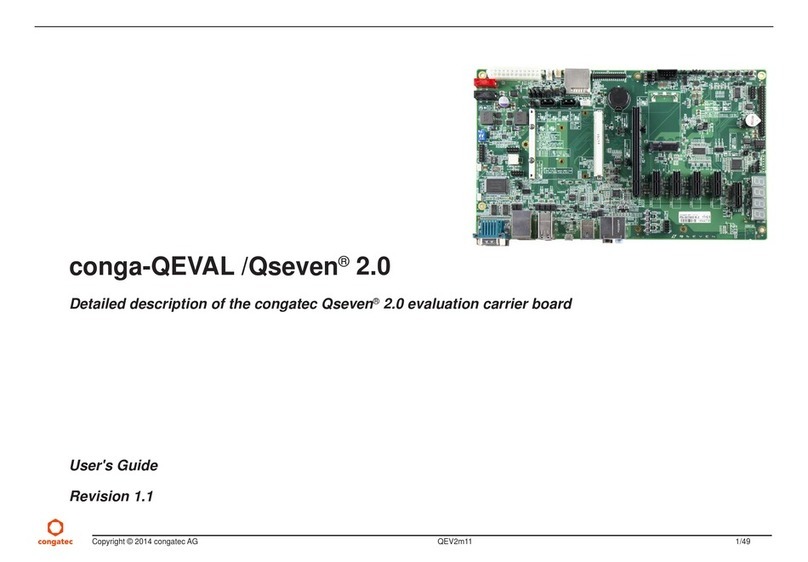
Congatec
Congatec conga-QEVAL/Qseven 2.0 user guide
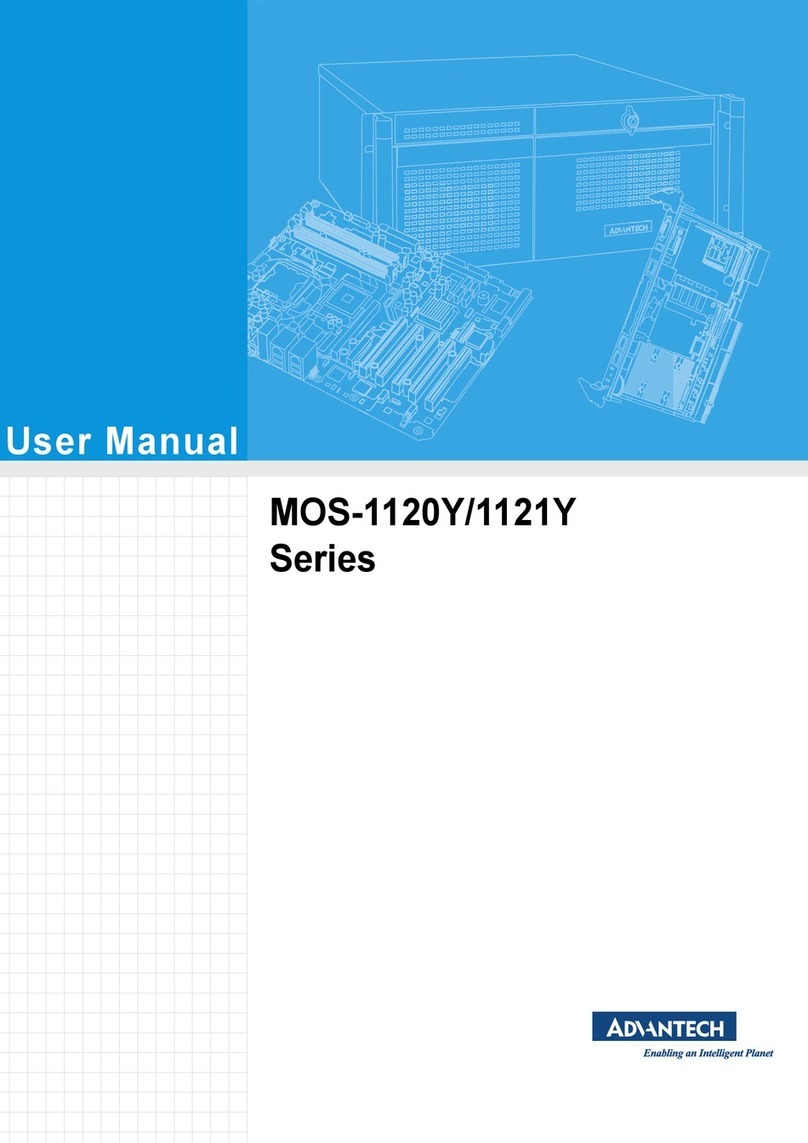
Advantech
Advantech MOS-1121Y Series user manual
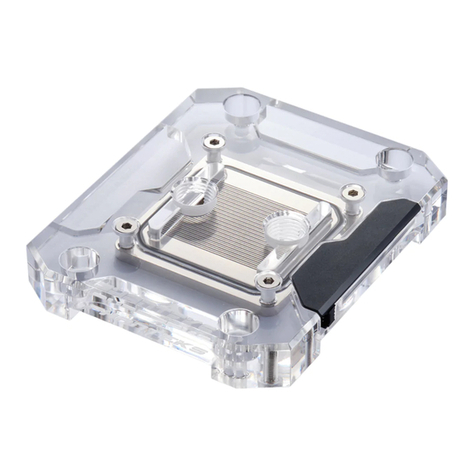
Phanteks
Phanteks GLACIER C360A installation guide
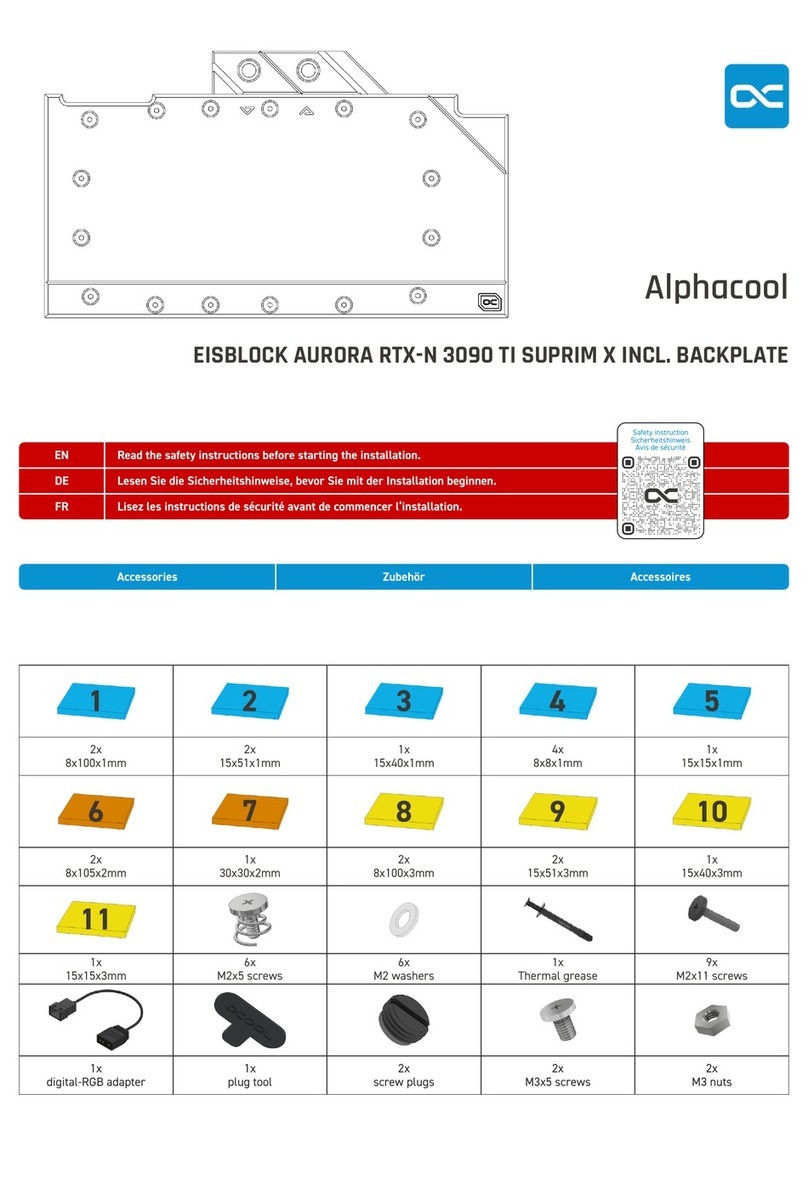
Alphacool
Alphacool EISBLOCK AURORA RTX-N 3090 TI SUPRIM X INCL.... manual
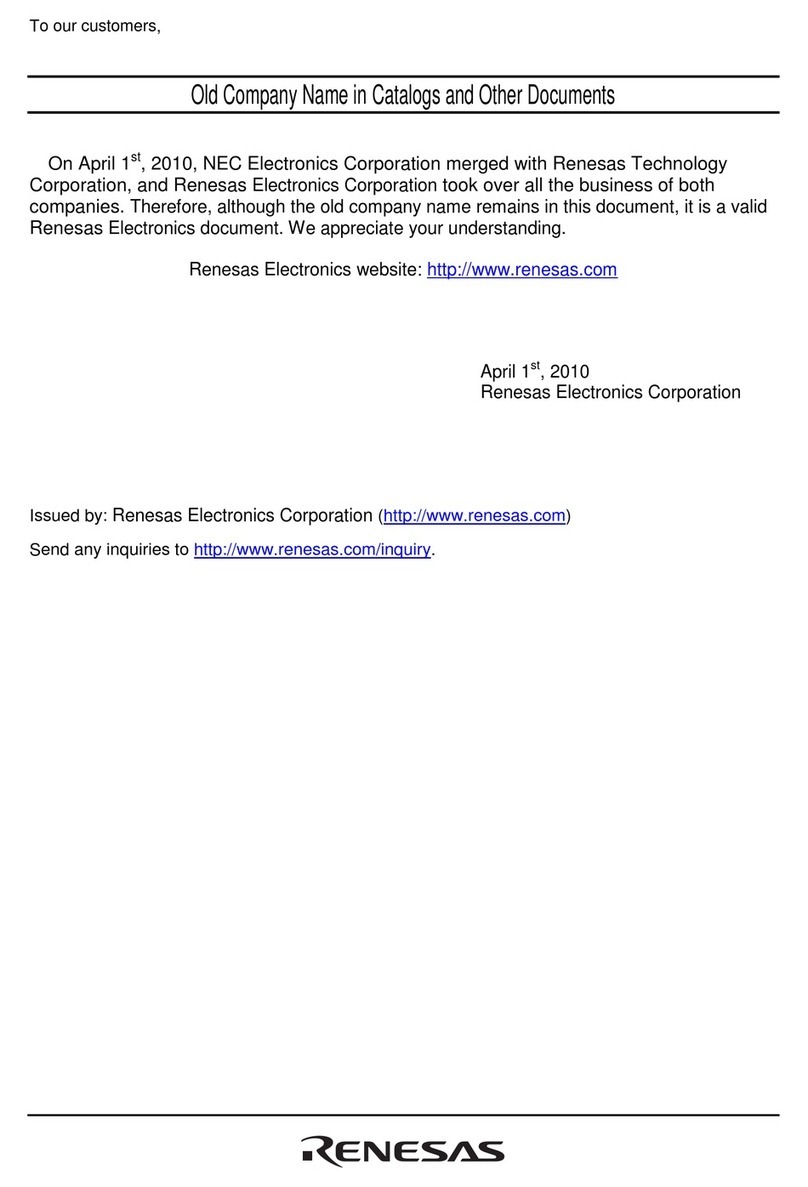
Renesas
Renesas Converter Board M3T-100LCC-QSD user manual
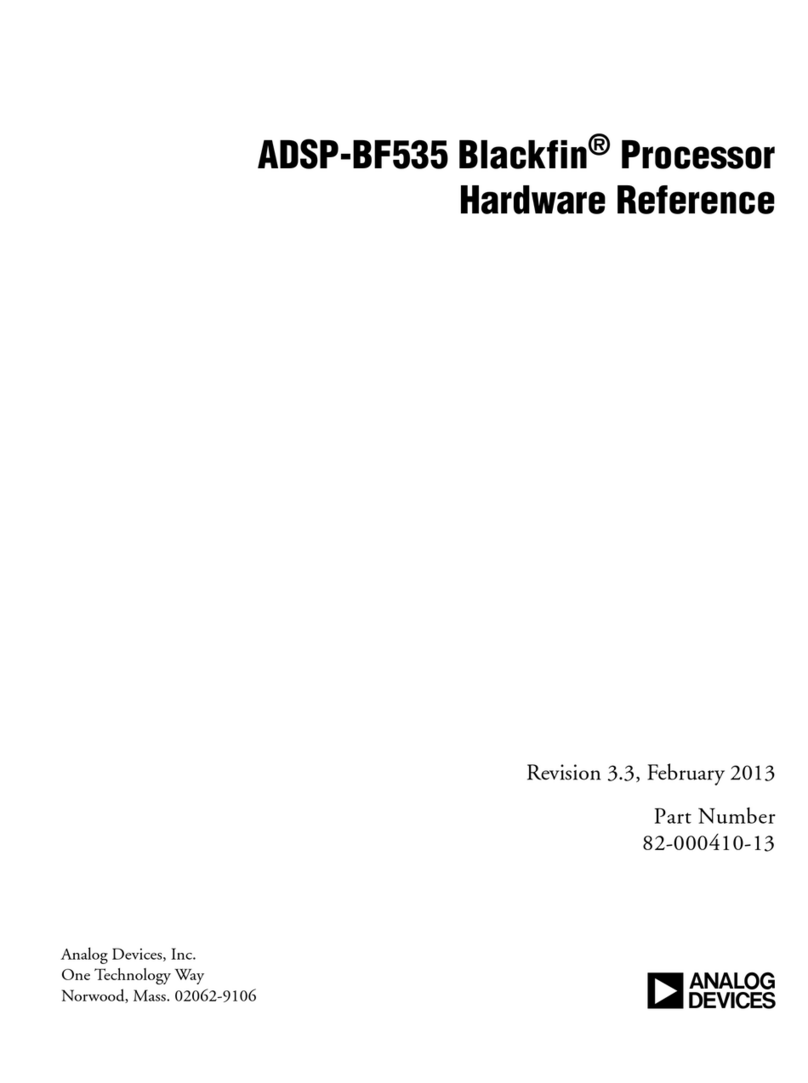
Analog Devices
Analog Devices ADSP-BF535 Blackfin Hardware reference
